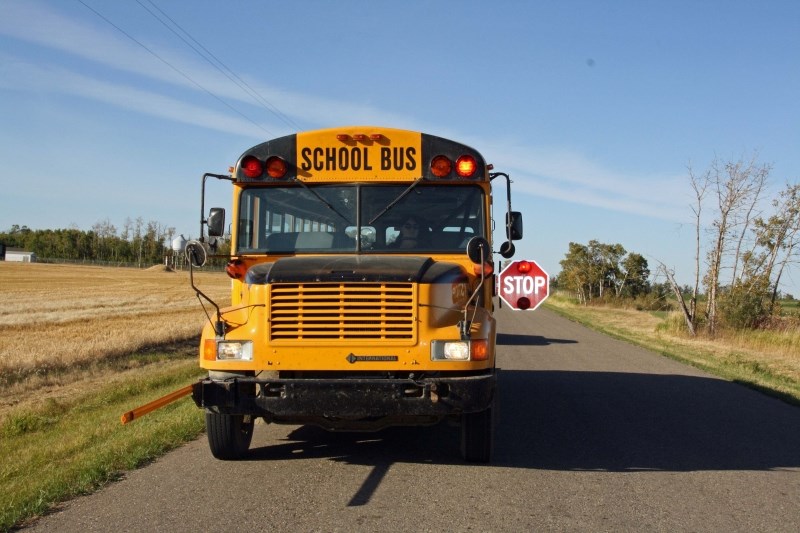While the topic of combining the school bus systems for Northern Lights Public Schools (NLPS) and the Lakeland Catholic School District (LCSD) has been discussed, different schedules and lack of funding are among issues for both sides when it comes to bringing the services together.
About seven years ago, the school boards decided to go separate ways when it came to offering students transportation.
“When it came down to it, it was a question of what was best for our students,” explained LCSD board chair Mary Anne Penner. “As it happened, Northern Lights at that particular point weren’t willing to work with us on it. We made the decision to go with what we were able to do, and provide our students with transportation.”
NLPS board chair Arlene Hrynyk noted one of the factors for the split was their school years.
“The initial agreement was under the understanding of more of a shared calendar, and what happened over time was the calendars were getting more and more divergent,” she said.
Due to these changes, Hrynyk noted the costs for transportation were going up and neither district was receiving more funds from Alberta Transportation as a result.
Finding a mutual schedule held up previous conversations about combining stransportation since the initial decision was made to offer their own services.
“At the end of the day, we know that everybody has the responsibility to set their own calendar. That’s one of the biggest barriers we hear provincially about shared arrangements. To (ask) if it would be successful? You’re always hopeful that anything you work collaboratively for in a community is going to be successful. Nobody ever wants to see anything fail,” expressed Hrynyk.
Penner believes it might “be a disadvantage if we put the two systems together.”
She explained, “I think possibly because we don’t have the same flexibility with the calendars, that’s what it comes down to. We try to work with our partners as far as the calendar is concerned, but there are times when we like our early dismissals... and Northern Lights doesn’t like those. That would be an issue, and it comes down to the flexibility that we work with.”
While the topic has been discussed over the years, a change in legislation around cooperative agreements with transportation means losing money that would be allotted to each school district.
“If the arrangement goes south, you don’t get funded at the same level. You lose the dollars that were granted for that shared arrangement, so there’s no financial incentive,” Hrynyk detailed. “Everybody is always interested in exploring ways we could collaborate and offer better services to our community, but at the same time, it’s a disincentive if you know that, for whatever reason, if it isn’t successful, you’re now faced with an even bigger financial barrier to a system that has been underfunded for a number of years.”
Penner and Hrynyk agreed their top priority is ensuring students get to and from school safely.
“We’ve been able to offer a service to our students, and been able to accommodate the different bussing routes for our students. Sometimes it takes a little bit more work, but we’ve been able to do it and still maintain a reasonable budget with bussing,” Penner said.
She added, multiple buses being seen headed down the same road could be doing so for a number of reasons For example, some residents could be “seeing buses when they’re at the beginning or at the end of their routes after they’ve dropped students off.”
Where people live is another major factor for the routes.
Hrynyk detailed, “The bus still has to go where the child is, there (could) be one child at the end of the road and the bus has to travel 19 kilometres for that child. But, it still has to go there and it’s our responsibility to get our children to school safely. We don’t get to choose where Albertans live, we want to do the best we can to keep rural Alberta strong and our families.”



